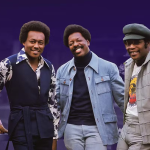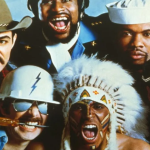“The Streak” – Ray Stevens

“The Streak” by Ray Stevens, released in 1974, is one of the most iconic novelty songs of the 1970s, capturing the essence of a short-lived but widespread cultural phenomenon: streaking. Streaking, the act of running naked through a public place, became a popular fad in the early 1970s, and Stevens’ song humorously chronicles this behavior with wit and charm. Reaching No. 1 on the Billboard Hot 100 and charting internationally, the song highlights Stevens’ knack for blending comedy, social commentary, and catchy melodies. “The Streak” not only entertained audiences but also cemented Stevens’ reputation as a master of humorous songs.
Musically, “The Streak” is a light, upbeat tune driven by a lively melody and a playful rhythm. The song’s fast tempo mirrors the energy and excitement of the streaking phenomenon it describes. Stevens uses a combination of country, pop, and novelty song elements, blending them into a sound that is both easy to listen to and perfectly suited for comedic storytelling. The bouncy arrangement, featuring guitars, bass, drums, and light brass, complements the humorous nature of the lyrics, giving the song a whimsical feel. Stevens’ vocal delivery is conversational and playful, as he alternates between singing and speaking, adding to the song’s comedic effect.

One of the defining features of “The Streak” is its storytelling format. The song is structured as a series of humorous vignettes in which a reporter (voiced by Stevens) interviews a man who repeatedly witnesses streakers in public places. Each verse features the man’s exasperated attempts to warn his wife, Ethel, about the streaker, but she invariably ends up seeing him despite her husband’s efforts. The recurring punchline, “Don’t look, Ethel!” has become one of the song’s most memorable and iconic lines. The juxtaposition of the man’s panic and Ethel’s unintentional voyeurism creates a comedic dynamic that propels the song forward.

Lyrically, “The Streak” captures the absurdity and humor of streaking while poking fun at the media frenzy surrounding it. Stevens cleverly weaves together humor, wordplay, and satire, using the streaker as a symbol of the larger cultural trends of the time. In the 1970s, streaking was seen as a form of rebellion, a way to challenge social norms and express freedom in an increasingly permissive society. By turning the streaker into a comedic figure, Stevens lightens the subject matter, transforming it from a rebellious act into a harmless, silly prank. At the same time, the song subtly comments on the media’s obsession with sensationalism, as the reporter eagerly seeks out the streaker’s next appearance.
The repeated use of phrases like “Here he comes!” and “There he goes!” creates a rhythm within the storytelling, adding to the song’s comedic timing. The song’s structure mimics the cyclical nature of the streaking fad itself: a sudden appearance, followed by public shock, and then disappearance, only to be repeated again. This repetition not only reinforces the humor but also mirrors the repetitive cycle of media coverage and public reactions to streaking incidents during the 1970s.

“The Streak” also stands as a cultural time capsule, encapsulating a very specific moment in American pop culture. Streaking was particularly popular at sporting events, college campuses, and public gatherings, and Stevens’ song captures the lightheartedness of this fleeting craze. By 1974, streaking had become so popular that it even occurred during major events like the Academy Awards and sporting championships. Stevens’ ability to tap into this trend with a hit song speaks to his keen awareness of pop culture and his skill in turning current events into entertainment. The success of the song lies not just in its humor but also in its timeliness; it arrived at the height of the streaking craze and offered audiences a chance to laugh at something that was already on everyone’s minds.
The song’s legacy endures in part because of its catchy, sing-along quality. Stevens’ clever wordplay and his use of repetition make “The Streak” an earworm that listeners remember long after hearing it. Even though streaking as a phenomenon quickly faded from the cultural spotlight, the song has remained a classic in the novelty song genre. Its continued popularity can be attributed to its humor, its nostalgic appeal, and Stevens’ talent for delivering a memorable and entertaining performance.

Ray Stevens is well-known for his comedic songs, and “The Streak” is perhaps the pinnacle of his success in this genre. Prior to this hit, Stevens had already built a reputation as a versatile artist, capable of creating both serious and humorous music. His earlier hits, such as “Ahab the Arab” and “Gitarzan”, established him as a talented novelty songwriter, but “The Streak” took his comedic success to new heights. The song’s ability to tap into a specific cultural moment while remaining lighthearted and fun showcases Stevens’ unique ability to blend music and comedy in a way that resonates with a wide audience.
In conclusion, “The Streak” by Ray Stevens is a prime example of a novelty song that captured the spirit of the times with wit, humor, and musicality. It is a playful, lighthearted commentary on the streaking fad of the 1970s, offering listeners a humorous take on a bizarre cultural phenomenon. The song’s catchy melody, clever storytelling, and comedic punchlines make it a timeless classic that continues to bring smiles to listeners’ faces. While the streaking fad may have been short-lived, “The Streak” has endured as a beloved piece of pop culture history, cementing Ray Stevens’ status as one of the great comedic musicians of his era.











